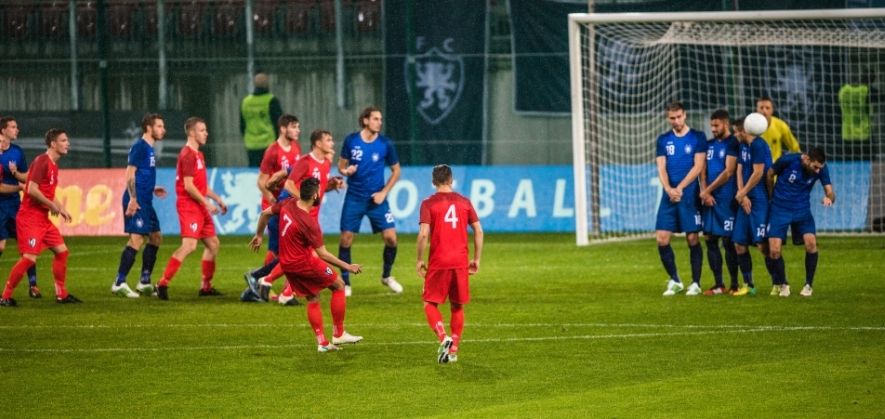You’re new to the game.
A few days ago you finally settled on Real Madrid as your preferred club of choice, and you were finally excited to follow their sporting progress within the domestic league.
But because you were busy over the weekend, you could only manage to keep tabs with their La Liga fixture through mobile phone updates.
So, over your Saturday lunch break you check one of the many live score applications for a quick update on the game scoreline between Real Madrid and another spanish side called Levante.
To your surprise, you see that Real Madrid took the lead in the 31st minute of the match, but the scorer is actually a Levante defender with the acronym “OG” placed right beside the player’s name.
Confusion ensues.
What has happened here?
Well, first things first.
The good news is that you don’t have to go searching anywhere else for answers!
And that’s because this article is going to explain what the OG abbreviation means in soccer.
More experienced fans of the beautiful game will already know exactly what has unfolded, but it’s important to explain some of the very basics of soccer to the fresh followers.
Alright, let’s start with an answer that gets straight to the point…
An OG in soccer is the shorthand term for an “Own Goal”. This is an event that occurs when a player accidentally scores a goal against their own participating team.
In other words, an own goal situation happens when a goal is scored in favor of the opposition, but not by a member of the opposition themselves.
Here’s a nice resource which explains this concept even further:
“While the defending player who scored the own goal is personally “credited” with the goal as part of the statistical abstract of the game (with the annotation “(og)” to indicate its nature), own goals are not added to a player’s seasonal or career goal scoring total.”
Source – Wikipedia
What this means is that players who score own goals don’t have those actions credited to their personal goal tallies.
And it makes sense because why would you award someone when their negative contribution played against their team’s success?
How is an OG scored in soccer?
An own goal action is one of the risks that defenders of teams have to take into account whenever they’re guarding their own territory.
Here are a few ways in which own goal situations may present themselves:
1. Deflected crosses

Dealing with a skillful winger is one of the trickiest tasks for defenders.
The threat from wide areas of the pitch is quite dangerous because crosses that are whipped in with pace from these positions are very difficult to deal with.
A defender essentially has to “turn behind” soccer balls that are hit at speed, knowing that the slightest bit of miscalculated contact could send the ball straight into their team’s own net!
Because such scenarios typically see defenders facing their own goal, they struggle to clear the ball to safety because of how hard it is to change the ball’s direction once it’s crossed into the box.
In most cases, defenders simply attempt to get a block on the ball by sticking out a leg.
But due to the fact that soccer balls crossed into the penalty area move so quickly, defenders may not be able to react fast enough to get appropriate contact in the process, resulting in an OG event that’s hard to avoid.
2. Free kicks
Dead ball situations are also another way in which defending teams can inadvertently put the ball into their own net.
You see, the defending team has to form a “wall” in front of the ball, which looks a bit like this:

When the soccer ball is struck by the free kick taker, players from the defending team who formed the wall will typically jump upwards in an attempt to block it.
However, this defensive action doesn’t always lead to the ideal result.
In some cases, the soccer ball may hit a part of someone’s body as it travels towards the goal, resulting in a change of direction that can leave a goalkeeper flat-footed.
And once the man between the posts can’t get a read on where the soccer ball is moving towards after it deflects off of the defender, then they’re pretty much helpless and will struggle to stop an own goal from occurring.
3. Misplaced passes

Sometimes all it takes is a tiny lapse in concentration for a player to put the ball into their own net.
For example, a player could attempt a backpass to their goalkeeper and overhit it in the process, sending the ball past their last line of defense and into an empty goal.
Alternatively, a defender could be under a bit of pressure from an opposition forward who diligently closes down.
Because of that, they could misjudge the position of their goalkeeper as they attempt to relieve themself from that pressure, sending the ball into their own goal as a result.
What are some famous OG examples in soccer?
Having described the sorts of situations where there’s a high likelihood of a player putting the ball into their own net, it’s good if you’re able to see these particular events for yourself.
Take a look at a few instances below:
Vincent Kompany vs. Fulham (2013)
This example illustrates the dangers of crosses from wider areas of the pitch.
Kompany tried his best to clear the ball away, but because he never manages to make clean contact with the ball, it sails over his goalkeeper and lands right in at the opposite side of the goal.
Keiran Trippier vs. Chelsea (2019)
The former Tottenham Hotspur defender made a complete mess of his backpass to Hugo Lloris in a London derby at Stamford Bridge.
Of all the times to make a mistake!
With the sporting stakes so high, it’s easy to see why he crumbled under the immense pressure levels.
Lee Dixon vs. Coventry (1991)
Mr. Dixon was known for being a reliable defender back in his playing days.
But even he wasn’t immune to the odd gaffe, as he made a complete mess of a situation that he had absolutely no right to.
It actually looks as though he was trying to lob his own teammate!
Can you imagine that, under no pressure whatsoever and approximately 30 yards away from goal, the Englishman decided to launch that terrible backward pass towards David Seaman.
Wrap up
You should now know what an OG means in soccer.
But as a reminder…
An OG in soccer stands for an “Own Goal”. This acronym symbolizes an action where a player accidentally sends the ball into his own team’s goal, resulting in a goal being awarded to the opposition.
If you’ve enjoyed this piece, you also might want to have a read of this article on what a CS means in soccer.
If you enjoy the content that I create and would like to buy me a coffee, then I’d really appreciate it!
Any money that I earn through this donation will be re-invested into more content for this website.
Additionally, by sending in a donation you’ll also receive a copy of my recently released 190+ page eBook on Soccer Ball Care, as well as be subscribed to our mailing list where you’ll be regularly informed on the latest developments concerning the Soccer Whizz blog.
- Future Icons: Europe’s Emerging Midfield Maestros Set for Glory - December 4, 2023
- Kickstarting a Revolution: How Soccer Transformed the United States Over the Last Four Years - October 7, 2023
- 4-1-4-1 Soccer Formation [Analysis] - September 23, 2023

